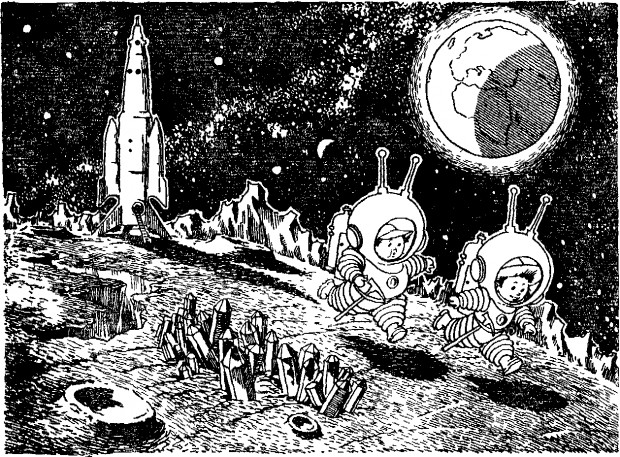Руководитель по разработке китайской лунной программы Е Пэйцзянь (Ye Peijian) подтвердил, что КНР намерена реализовать все проекты по исследованию земного спутника в срок, несмотря на решение США изменить свою стратегию в отношении Луны. Слова Пэйцзяня приводит издание China Daily.
Модель орбитального лунного зонда «Чанъэ-2″. Изображение с сайта cnsa.gov.cn
China Moon Exploration Project
Coming China Space Wars — Navarro’s China Effect
Colonizing The Moon
Китай подтвердил свои намерения реализовать лунную программуСпециалист подтвердил, что во второй половине 2010 года Китай планирует запустить на Луну второй орбитальный зонд «Чанъэ-2″. Изначально он создавался как замена зонду «Чанъэ-1″, однако позже был модифицирован и сейчас, по словам Пэйцзяня, он относится к следующему поколению космических аппаратов.
Вслед за «Чанъэ-2″ на Луну в 2013 году будет запущен спускаемый модуль «Чанъэ-3″, который должен изучить геологические особенности земного спутника. В 2017 году Поднебесная рассчитывает отправить к Луне пилотируемый космический корабль.
Первый китайский орбитальный лунный зонд был запущен 24 октября 2007 года и после 16 месяцев пребывания в космосе врезался в поверхность спутника. По словам китайских ученых, аппарат составил топографическую карту Луны, а также изучил распределение некоторых химических элементов.
США отказались от прицельного освоения Луны в феврале 2010 года. Новая стратегия развития NASA подразумевает работу над краткосрочными космическими миссиями, а также тесное сотрудничество с частными космическими компаниями, которые, в частности, должны создать для Американского космического агентства новые пилотируемые и беспилотные корабли.
2nd lunar probe set for launch this year
By Xin Dingding (China Daily)
Updated: 2010-04-13 07:13 Comments(17) PrintMail Large Medium Small
BEIJING — China will push ahead with its lunar exploration program despite the United States’ decision to suspend its return to the moon, a senior space exploration scientist has said.
Ye Peijian said China will continue its moon exploration program.
«China should not slow down its pace of lunar exploration even if other countries change their plans,» Ye Peijian, chief designer of the nation’s first lunar probe, Chang’e-1, told China Daily.
The country plans to launch its second lunar probe, Chang’e-2, in the latter half of this year as well as send a lunar lander and rover by 2013, Ye said.
The latest signal of China’s resolve in lunar exploration follows US President Barack Obama’s announcement in February that his administration was axing the US National Aeronautics and Space Administration’s (NASA) Constellation program, which former president George W. Bush started in 2004 to return Americans to the moon by 2020.
Instead, NASA was asked to focus on technologies to prepare for human missions to other destinations in the solar system.
Billions of dollars will be spent on new commercial spacecraft that could carry US astronauts into low Earth orbit, on technology development, and extending the life of the International Space Station, media have reported.
The US investment in new technology is expected to lay the foundation to support effective and affordable journeys to the moon and eventually to Mars.
Ye conceded the refocused efforts of the US on Mars and Earth observation do represent a future trend.
The US could postpone moon-landing plans because «they made it to the moon some 40 years ago and still hold the technological advantage», he said.
China stands a better chance of joining more international projects in the field with a smaller technological gap, he said.
The country should also explore Mars independently, Ye said.
According to its three-phase moon exploration road map, the country will launch the Chang’e-2 lunar orbiter this year, conduct a landing by 2013 with Chang’e-3 and collect surface samples by 2017.
The Chang’e-2 orbiter is designed to test key soft landing technologies for Chang’e-3 and provide high-resolution photo images of the landing area.
«Compared with the country’s first lunar probe launched in October 2007, Chang’e-2 will fly at a lower orbit of 100 km from the moon’s surface, and a more powerful launch vehicle will send it to the Earth-to-Moon transfer orbit in just one shot,» Ye said.
China’s first lunar probe Chang’e-1 — named after a legendary Chinese moon goddess — completed its 16-month mission in March 2008 after hitting the moon surface with a bang, marking the country’s first step toward a moon mission.
The probe flew in an orbit 200 km high and spent seven days circling the Earth before entering the transfer orbit.
Ye said the Chang’e-3 mission is making «good progress» in prototype development and scientists are working on Chang’e-4, of which he did not give details.
China Daily
 Оси мира паранормальное рядом
Оси мира паранормальное рядом


